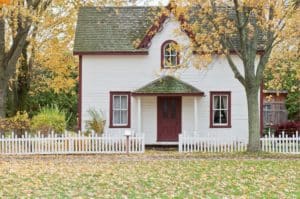
–Aaron Adams, Realt estate investor
Single-family homes as an asset class. I hear all the time, “why would I want single-family homes?” I want apartment complexes, or I am more interested in a commercial property or, I want to do an Airbnb house. I like those kinds of projects too. Just to give you an idea over the last eighteen years I have built spec homes, I have developed land, I have owned mobile home parks. I own mobile home parks, commercial construction,mixed-use buildings, I have coming up on twenty Airbnb properties, and I own hundreds of single-family homes. As a word of warning, I would be suspicious of anyone who says that one asset class is better than another. That throws up a red flag for me. I like good deals. So, if I find cheap land then I am interested in developing it. If I find the distressed property, regardless of the asset class, I am interested. If there is a compelling narrative in the neighborhood that would describe the potential for appreciation if I would fix that property up, then I am interested. I think that a lot of people who have maybe heard that a teacher or a book or some training that soapboxed a particular asset class, and I think that is maybe a mistake.
I wanted to take a few minutes and talk about what I think the benefits of single-family homes are because I think they are sometimes not understood well enough by newer investors and aren’t thought of in the right context. At the most basic level, single-family homes have the highest liquidity of virtually any type of real estate. By liquidity, I mean, “get rid of it”. So, think of all of the ways you can get rid of a single-family home you don’t want you can sell to a:
- Homeowner
- Tenant
- Investor
- Wall Street Fund – Since 2012 Wall Street has purchased 2-3% of the homes in America.
- REIT – real estate investment trusts
You have multiple ways to get rid of a single-family home. If you buy an apartment complex you are not selling it to a homeowner. If you buy raw land you are not selling it to a homeowner. Commercial property has lower liquidity. It is harder to get rid of. It takes more time. And in a down market, the liquidity can go through the floor. There is nothing worse than owning a piece of property, that the only way you can sell it is to give it away. And some of you are probably nodding your head and thinking, “yeah, I remember when I did that on a piece of property”.
One of the benefits of owning single-family homes is the flexibility that it gives you. We have a client from California who did a million-dollar commercial property and they did a 1031 exchange, so they were able to defer paying taxes. They used that to flip that into twenty different single-family homes across several states. Now, think about their situations now, not only did they go from making $60,000 a year in rent to $200,000 a year, if they need to put their hands on some cash they can sell one of the homes. They don’t have to go take a mortgage against the commercial building or try to sell it. They can just liquidate one house. That flexibility is a big reason why they choose single-family homes.
Some people say, “I would rather own multifamily and they don’t understand why. I would rather have four homes that make 10% cash flow than one four-plex that makes 8%. Some people say, “there is only one roof over the four-plex, vs. four roofs”. To that I would say, you also have four different ways to get rid of the property. And if the neighborhood for that one apartment complex goes down in value then all four of your units go down in value. Whereas if you have your properties diversified in different neighborhoods and maybe in different markets, you are insulated from the whole neighborhood going down.

Turn-Key RE Investing
Successful real estate investor, millionaire, mentor, and turnkey real estate.
Consequently, if you have a hundred-unit apartment complex and the whole neighborhood goes to the dump, you now have a hundred units in the dump. And so, for every benefit for people promote about having multifamily, there is also a downside. It really highlights the fact that there is no such thing as one asset class that investors should own. Just like with a stock portfolio, you should be thinking about the diversification of your real estate holdings. Personally, I like 50-60% of my holdings to be in single-family homes. I love low-income commercial property, Airbnb, mobile homes, and apartment complexes. Those asset classes for me personally are only 40% of my holdings. Hopefully, this information has helped you think of it from a 35,000’ level, big picture, to aid in your decision making and has made you think a little. Good luck in your investing. — Aaron Adams